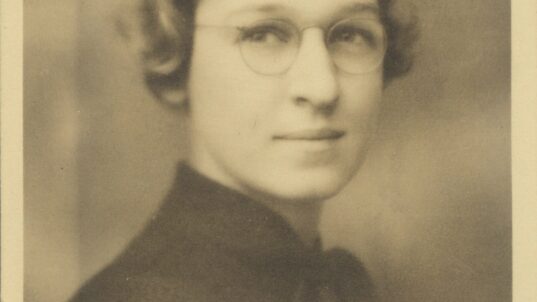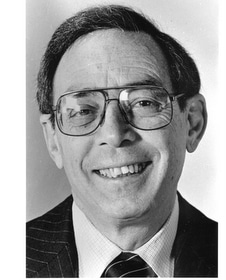Conventional views of the policy-making process are helpful–as far as they go. But they usually leave out a good deal, especially with respect to the potential role of democratic discussion. Consider, for example:
- Emotions, habits, beliefs, attitudes, assumptions, norms, concepts, and concerns (What the public cares about and how it cares about it are reduced to the cramped category of “public values.”)
- A description of how “public values” are—or might be—formulated (“Public values” are often held to be the original or basic source of public policy, but are taken as static givens.)
- A description how the “societal agenda” and the “government agenda” might be connected
- Any recognition that “policy alternatives,” “policy termination,” and “new problems” might influence “public values” (Although the text accompanying the chart indicates that such a connection exists, it apparently merits no connecting arrow in the chart.)
In short, while it is true that political scientists are increasingly challenging the notion that citizens’ largely unexamined and mostly individual “values” are—and should be—the proper and exclusive “source” of policy, that notion remains deeply entrenched, in- and outside of academia. So, too, does the assumption that policy outcomes have little or no impact on “public values.”
What might fill in these gaps? —Two interactive concepts. The first would replace the concept of “public values” (top left of the preceding chart) with a more expansive, inclusive, and practical description of citizens’ orientations to the choices they face as citizens in the present. The second concept would link this present-oriented description of what goes into citizens’ immediate choices to a dynamic description of how citizens’ might arrive at choices. This dynamic description would bridge the gaps in the flow chart between “the public” and “societal agenda” and between policy outcomes (bottom right of chart) and “the public” (upper left of chart). It would, in other words, describe how the public might be involved at the beginning of the policy-making process and how it might be affected by the results of the policy-making process.
“Democratic discussion” is such a concept. It is a shorthand way of referring to various processes that involve citizens in policy-making through the medium of discussion. Public discussion is one kind of democratic discussion among others— although of a very distinctive sort. Public discussion is democratic discussion in which citizens interactively explore and develop selected areas of concern (among which will figure the results of past policy-making), contrasting possibilities for addressing them, and test the consequences of applying these possibilities. This means that public discussion may be particularly well suited to contexts in which policy-making has not yet reached the stage of actual decision-making or action.
Where Democratic Discussion Might Fit into the Policy-Making Process. An increasing number of democratic theorists and citizens’ groups have been promoting various forms democratic discussion over the past two decades. Their motives vary, and they tend to disagree rather sharply over the questions of where and how to insert democratic discussion into the policy-making process.
It is probably best to pay these family quarrels only so much heed. Just as there is no single form of democratic discussion, there is no single point at which democratic discussion should be inserted into the policy-making process. Democratic discussion can take multiple useful forms; democratic discussion can be made part of nearly any stage of policy-making (even “implementation”).
Where Public Discussion Is Most Likely to Be Useful in the Policy-Making Process. Most believers in democratic discussion focus their attention on one or another stage of policy-making. The broadest division is between those who think that democratic discussion’s most important contribution is to the “societal agenda” (or to what is sometimes called “preference formation”) and those who believe that democratic discussion should be used at the point of “policy formulation” (or “will formation”). “Public discussion” as used here is primarily directed toward the former: toward the discussion of public policy before decisions or actual choices are on the table (though it begins with an area of concern rather than “preferences” and concludes with contrasting conceptual possibilities rather than an “agenda”).
The view that public discussion—whether based on prior public discussion or a sanctuary staff work report—might best be used in this way results from two closely interactive considerations, the first related to current limitations on citizen policy discussion (a subject I’ll address in my next posting), the second related to where—or when—public discussion can be most useful. Both point in the same direction.
(1) Limitations of current democratic discussion can best be addressed before the actual stage of policy formulation and decision
Many of the limitations of current democratic discussion that can be addressed by public discussion are clearly best addressed early in the policy-making process, including:
- Broad conceptual exploration and development of areas of concern
- Broad conceptual exploration and development of possibilities
- Broad exploration and development of possible practical consequences through testing.
All of these require the kind of deliberate pace that only time and patience allow. The closer the point at which policy is enacted, the less time is available to address them and the more advocacy is likely to intrude on the discussion.
(2) Democratic discussion is most likely to have a positive impact on both citizens’ thinking and policy choices (whether exercised directly or through representatives) when conducted before the actual stage of policy formulation and decision.
- The closer discussion is in time to actual decisions, the more it will tend to be subject to manipulation, “influence,” and advocacy for particular interests or results.
- The prospect of even relatively proximate decisions may lead citizens to think that further discussion is unnecessary.
- Actual decisions may effectively put at least a temporary stop to discussion.
Public Discussion—Complementary Contributions to Democratic Discussion. Public discussion can serve as in instance of democratic discussion and/or it can serve to as a catalyst to wider democratic discussion.
The distinctiveness of public discussion does not mean that it is the best form of democratic discussion at all times and in all circumstances. Other forms of democratic discussion may be better suited to different stages in the policy-making process, e.g., the context of actual decision-making or “policy formulation.” Public discussion is intended not to displace but rather to complement other efforts by:
- clarifying citizens and groups’ choices about the elected representatives who are the source of the bulk of democratic government action, most of which is ultimately based on compromise. In a representative democracy such as ours policy decisions are “in the end” most often made by representatives. Governance discussions can help citizens make wiser governmental choices indirectly through representatives. 2.
- clarifying citizens and groups’ future choices in participatory arenas (such as New England Town Meetings). Direct or participatory democracy does not inherently or necessarily involve interactive discussion. Even when it approximates the deliberative standards its proponents uphold, the policy outcomes it produces will be more thoughtful if participants have been able to build on the careful and interactive exploratory and developmental discussion of others. (This is the basic idea behind Interactivity Foundation’s public discussion Reports, which allow citizens in subsequent public discussions to build on the discursive efforts of sanctuary participants.) In participatory arenas, too, prior public governance discussions can help citizens make wiser governmental action choices, though in this case the choices are made by citizens directly.
- providing a means for citizens and groups to influence the “societal agenda” in a thoughtful way and in a thoughtful direction.
Citizens’ and groups’ ongoing discussions—those that will figure in individual and collective action at some future point—are perhaps as much a concern as those that might inform choices in the present. Sustained democratic discussion can be particularly useful (to both individual citizens and society as a whole) across a wide range of issues, especially those that pose significant moral, conceptual, or organizational challenges, and/or that are only just emerging into view.
* For an earlier, expanded, version of this essay, see essay U-1 at: https://www.interactivityfoundation.org/wp-content/uploads/2009/12/Public-Discussion-paper.pdf


